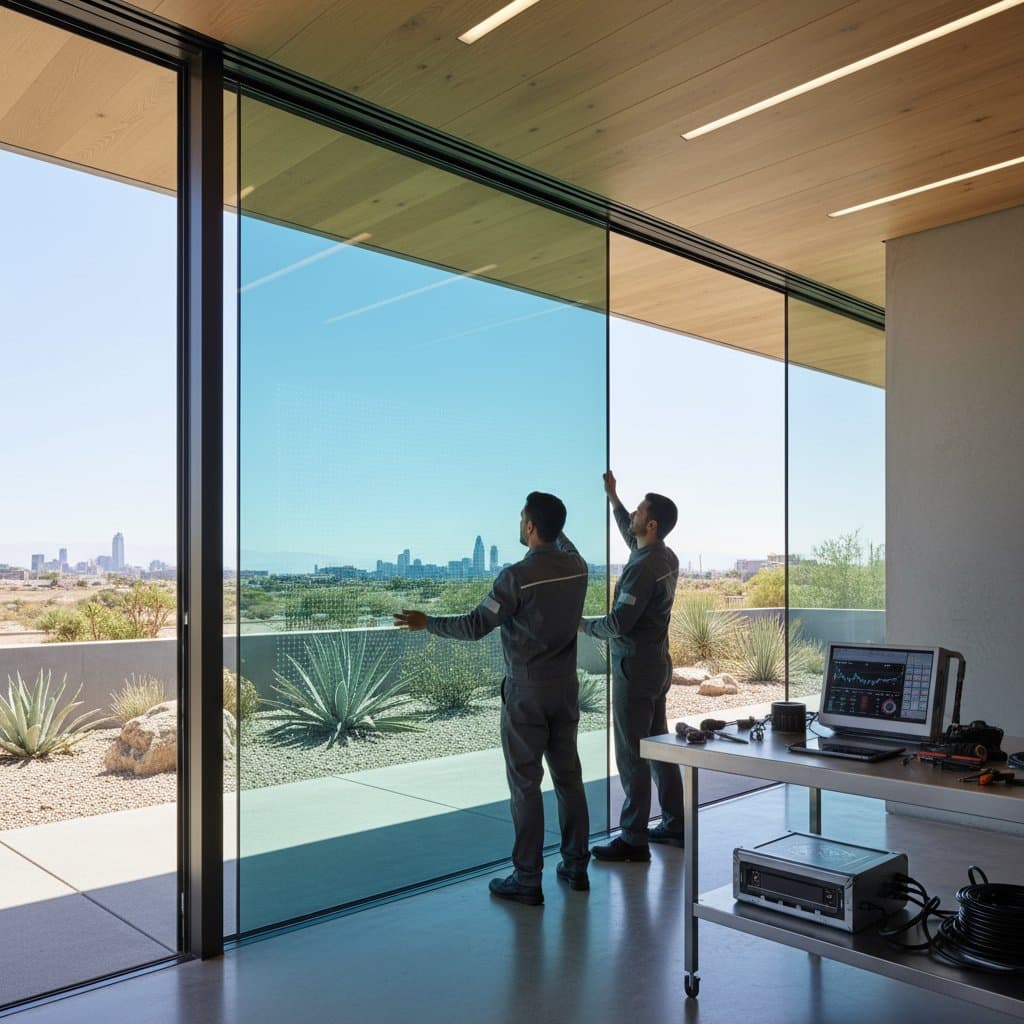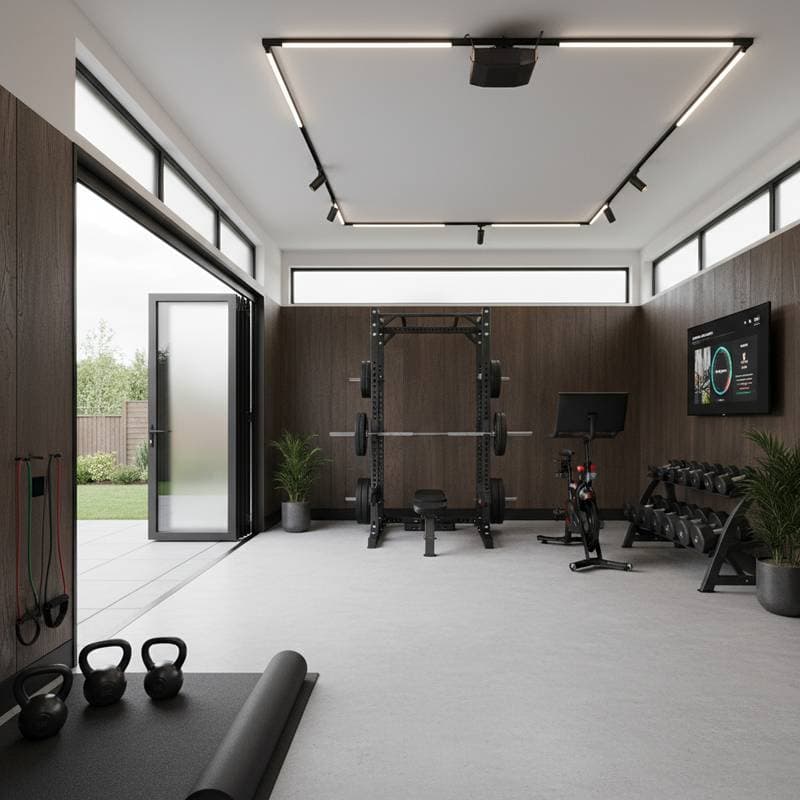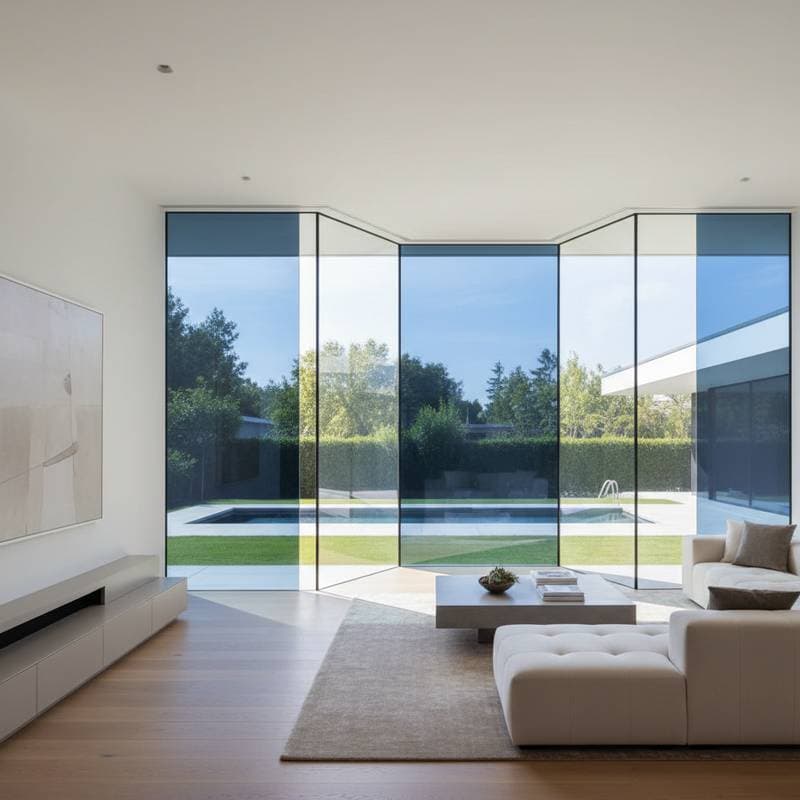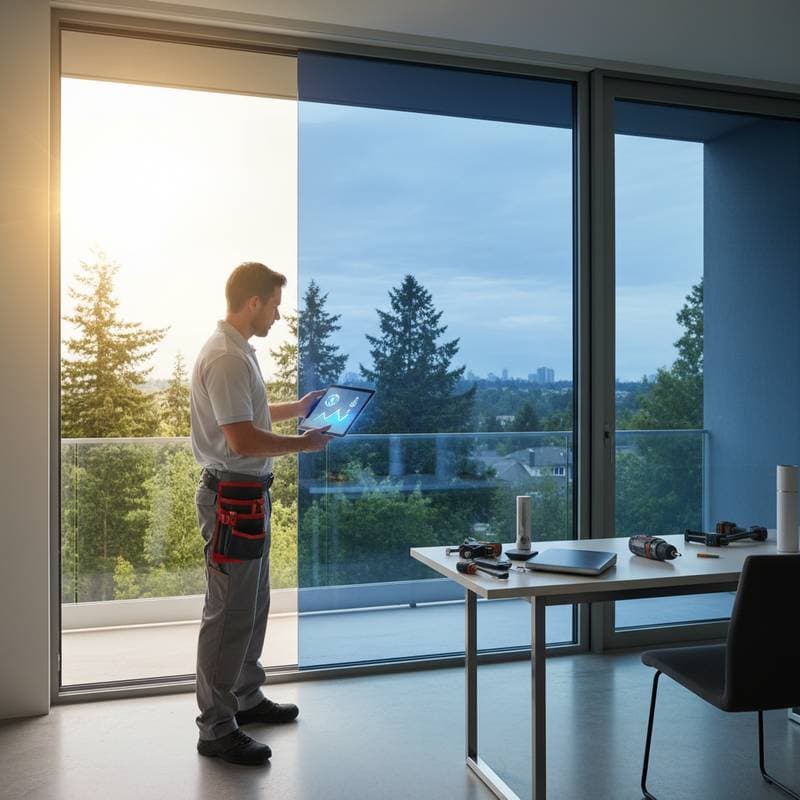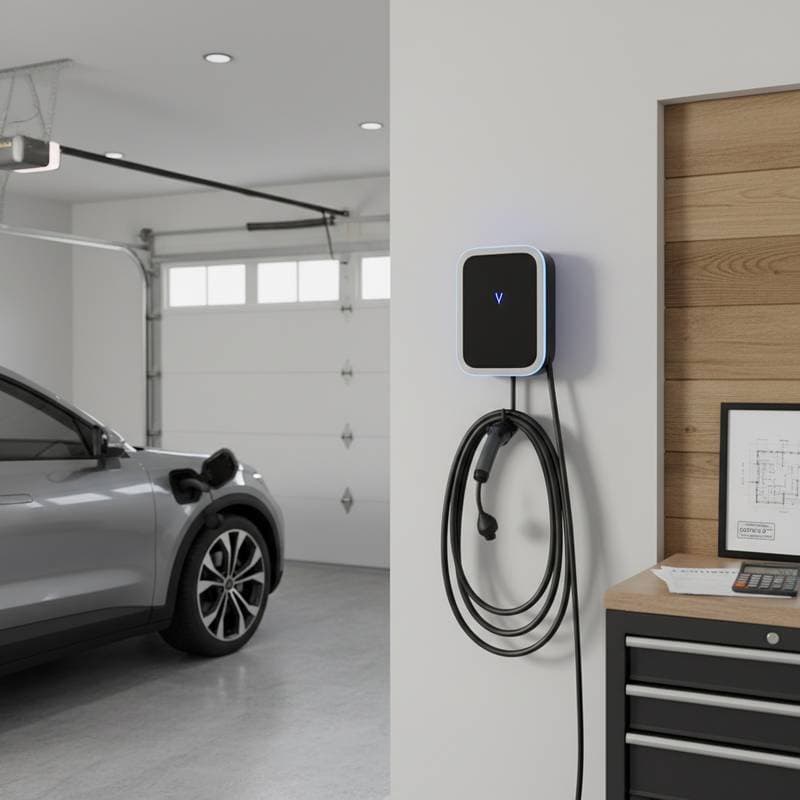Smart Glass: Achieving 15 Percent Energy Savings and Enhanced Property Value in 2025
Smart glass technology offers homeowners a practical way to reduce energy bills by approximately 15 percent while increasing property value. This innovative material tints or clears automatically to manage heat and glare, delivering energy efficiency without disrupting daily routines.
Understanding Smart Glass Technology
Smart glass regulates the amount of light and heat transmitted through windows via specialized coatings that respond to electrical currents or environmental conditions. Users control it through switches, remote devices, or mobile applications, while certain models adjust independently based on temperature or light levels.
In its darkened state, the glass blocks heat gain and ultraviolet rays. In the clear state, it allows natural light and warmth to enter. This dynamic control reduces the workload on heating, ventilation, and air conditioning systems, maintaining consistent indoor comfort.
Step-by-Step Installation Guide
1. Evaluate Existing Windows
Begin by inspecting current windows to determine if they feature single or double panes. Smart glass typically requires full window replacement rather than partial upgrades, so a professional assessment aids in accurate cost estimation.
2. Select the Appropriate Glass Type
Options include electrochromic, thermochromic, and suspended particle varieties, each designed for specific needs. Electrochromic glass provides precise manual control. Thermochromic glass shifts automatically with temperature changes. Suspended particle glass offers rapid response times but requires continuous power to remain transparent.
3. Measure Window Openings Precisely
Exact measurements prevent gaps that could lead to air leaks or energy loss. Engage a professional service or double-check dimensions before placing orders.
4. Engage a Certified Professional for Installation
Installation involves integrating wiring with existing electrical or home automation systems. A licensed installer guarantees adherence to building codes and preserves warranty validity.
5. Test Functionality and Integrate Systems
After installation, verify tint adjustments and automated features. Connect the system to a smart home hub for seamless operation if applicable.
Detailed Cost Analysis
Costs for smart glass vary based on window dimensions, material type, and installation demands. The following provides national averages for residential upgrades.
| Task | Typical Cost Range | Key Price Influences |
|---|---|---|
| Full window replacement with smart glass | $700 - $1,000 per window | Window size, glass variety, control mechanisms |
| Application of smart film to existing windows | $250 - $400 per window | Film adhesion, power integration, window condition |
| Comprehensive home automation setup | $1,500 - $3,500 total | Brand of system, wiring length, feature set |
Factors increasing expenses include oversized or custom-shaped windows and sophisticated control options. Savings arise from bulk purchases, standard rectangular designs, and standalone power systems.
Projected Savings and Return on Investment
Implementation of smart glass typically yields 15 percent reductions in heating and cooling expenses. In regions with high cooling demands, savings may climb to 20 percent. Homeowners often recoup investments within five to eight years, influenced by local energy prices and the number of windows upgraded.
Combining smart glass with solar panels, programmable thermostats, or enhanced insulation accelerates returns. Prospective buyers view this upgrade as a desirable feature, potentially elevating home resale values by 3 to 5 percent.
Project Timeline Considerations
Upgrading windows in a single room generally requires one to two days. Full-home installations span one to two weeks, contingent on the quantity of windows and accessibility of electrical components.
Projects in new constructions or ongoing renovations proceed more swiftly due to exposed wiring. Challenges arise in older homes with solid walls or intricate structures, extending timelines.
Deciding Between DIY and Professional Installation
Suitable for DIY
- Applying smart film to intact windows.
- Projects with straightforward electrical access.
- Individuals experienced in basic wiring and sealing techniques.
Best Handled by Professionals
- Replacements involving sealed double-pane units.
- Integrations with smart home ecosystems.
- Installations requiring manufacturer warranties.
Professionals conduct power load tests, secure connections, and manage complex frames. Errors in wiring may invalidate warranties or compromise glass performance.
Essential Tools and Materials
- Measuring tape and spirit level for precise alignment.
- Voltage tester to verify electrical safety.
- Smart glass panels or adhesive films.
- Dedicated power supply units.
- Silicone-based sealant for perimeter application.
- Assorted screwdrivers and trim removal tools.
- Protective eyewear and work gloves.
Disconnect power sources prior to any electrical work. Prevent exposure of wiring to moisture during the process.
Broader Benefits for Energy and Comfort
Beyond financial savings, smart glass minimizes glare, filters nearly 99 percent of ultraviolet radiation, and protects furnishings from discoloration. It also serves as an effective privacy solution, transitioning from transparent to opaque with minimal effort.
During warmer months, it deflects solar heat to sustain cooler interiors. In colder seasons, it admits sunlight for passive warming. These capabilities ease HVAC demands and promote stable room temperatures throughout the year.
Smart Glass Versus Alternative Energy Enhancements
| Upgrade Type | Annual Savings Potential | Installation Difficulty | Additional Advantages |
|---|---|---|---|
| Smart glass | 10 percent - 20 percent | Moderate | Enhanced comfort, privacy features, increased resale appeal |
| Low-emissivity windows | 5 percent - 10 percent | Straightforward | Reduced ultraviolet penetration |
| Standard window films | 3 percent - 7 percent | Simple | Reversible and low-commitment |
| Thermal curtains | 2 percent - 5 percent | Easy | Flexible for seasonal adjustments |
Smart glass excels in its adaptability across seasons and automatic operation, delivering quicker payback in properties with extensive exposure to southern or western sunlight.
Adapting to Regional and Climatic Conditions
In colder areas, select variants that optimize winter solar heat gain while minimizing thermal escape. Hotter regions benefit from models with robust tinting to repel infrared solar energy.
Coastal environments demand laminated options resistant to humidity and corrosion. Hurricane-vulnerable zones require impact-resistant certifications per local regulations. Arid areas necessitate ultraviolet-stable wiring and seals to avoid degradation.
Building codes in some locales classify smart glass as an electrical system, potentially mandating permits or inspections. Verify requirements with authorities prior to commencement.
Long-Term Maintenance and Durability
Smart glass endures 15 to 20 years under routine upkeep. Use a solution of mild soap and water for cleaning, steering clear of ammonia-based or abrasive products. Inspect electrical connections annually for signs of wear or looseness.
For unresponsive sections, diagnose the control module first. Manufacturers typically provide five to ten years of coverage for electronic elements.
Ensuring Safety and Regulatory Compliance
Low-voltage operation, generally below 60 volts, characterizes electrically activated smart glass. Installations demand proper sealing, grounding, and placement of power units away from damp areas. Refrain from drilling into glass post-installation.
In fire-risk zones, verify compliance with resistance standards. Multi-level residences require tempered glass to satisfy emergency exit codes.
Indicators for Professional Intervention
Seek expert assistance upon observing:
- Inconsistent tinting or incomplete activation.
- Cracks developing adjacent to electrical points.
- Ongoing moisture buildup within panes.
- Frequent circuit interruptions during use.
Technicians diagnose control boards and wiring without risk. Self-attempts at repairs may exacerbate issues with films or coatings.
Seamless Integration with Smart Home Systems
Compatibility extends to prevalent automation platforms, enabling connections with:
- Voice-activated assistants for effortless commands.
- Ambient light sensors for proactive adjustments.
- Thermostats to synchronize energy management.
- Programmable schedules for enhanced privacy.
Custom programming allows gradual tinting during intense sunlight periods, mitigating glare while preserving illumination.
Illustrative Return on Investment Scenario
For a residence with 15 windows, annual energy savings post-upgrade range from $250 to $400. A $10,000 investment achieves breakeven within standard timelines. Available rebates for efficient modifications further compress this period.
Resolving Frequent Operational Challenges
| Problem | Recommended Solution | Common Cause |
|---|---|---|
| Failure to tint | Inspect power source and application linkage | Disconnected wiring or system reset required |
| Inconsistent shading | Reset control module | Electrical supply variations |
| Internal condensation | Address sealing issues | Compromised unit integrity |
| Unresponsive remote | Renew batteries or reconnect device | Interrupted signal |
Troubles often trace to electrical or calibration errors. Persistent fixed states in panels warrant direct manufacturer support.
Frequently Asked Questions
How does smart glass impact home insurance? Premiums may decrease due to energy efficiency and enhanced security features, though coverage for electrical components varies by provider.
Is smart glass compatible with historic properties? Yes, with custom framing and low-profile wiring to preserve aesthetics; consult preservation guidelines.
What energy sources power smart glass? Most systems use standard low-voltage transformers; solar-compatible options exist for off-grid setups.
Can smart glass reduce noise pollution? Certain laminated types offer sound dampening, complementing visual benefits.


